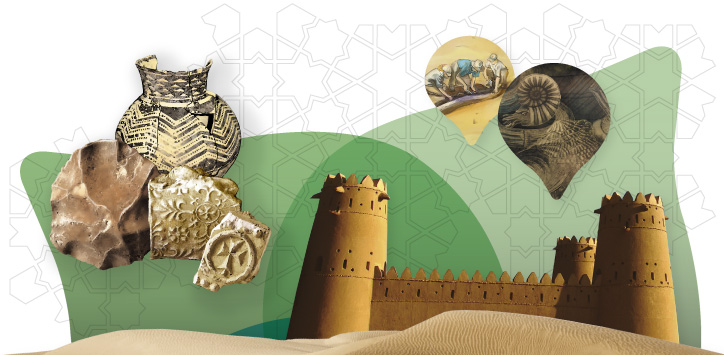
Human Journey

Ancient Environments
Environmental conditions during the Cretaceous were very different from today and sea levels were significantly higher. At times, as little as eighteen per cent ...
More infoEarliest Peoples
Our earliest human ancestors, known as hominids, evolved in East Africa. Most of the evidence for them has been discovered in the Great Rift Valley, which stretches ...
More infoOasis Settlements
At certain locations in the desert, water originating from mountain ranges many kilometres away can be drawn from aquifers deep below the ground. In some places, ...
More infoIron Age to Pre-Islam
As aridity gradually became a permanent feature of the Emirati environment, accessing groundwater increasingly became a challenge. Around Al Ain, falaj (plural aflaj) ...
More infoIslam to the Pre-Oil Era
Although it is convenient to divide history and cultural development into distinct and named eras, they all exist along a continuum of progress and transitions marked ...
More info






















